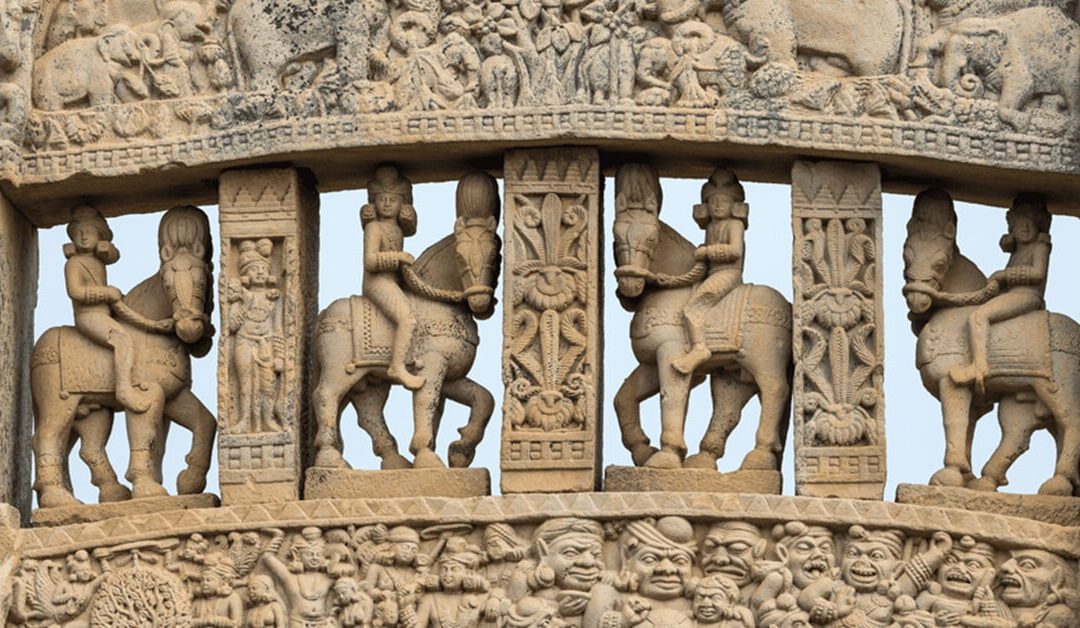
Golden Age of Gupta
The Gupta period is known as the Golden Age. This is due to the remarkable progress achieved in various fields during the Gupta period.
1. The Gupta kings united a vast territory and ruled a large empire.
2. Great kings like Samudragupta and Chandragupta Vikramaditya II ruled the Gupta dynasty. They eliminated foreign rule and established a stable administration.
3. The Gupta kings established peace in the empire and led to the all-round development of the empire.
4. Economically, the Gupta period was a period of prosperity and prosperity. Trade and commerce were at their peak.
5. There were many other poets, scholars, writers and playwrights like Kalidasa, Basa, Vishnu Sharma, Shudrakas and others who enriched the literary field.
6. The Gupta era was the time when the entire world was in a deep sleep in the field of science. It is a matter of pride that great scientists like Aryabhata, Varahamihira, Brahmagupta, who were the light of knowledge for the entire world, were in the Gupta era.
7. Religiously, although Jainism and Buddhism went on the path of decline, only Hinduism was revived, and the Hinduism of the flower reached its peak.
8. Hindu art and architecture rose and flourished, and Indian art, free from foreign influence, blossomed perfectly during the Gupta era. It led to the new Manvantara.
If we look at the opinions of various scholars.
According to Burnett:
The Gupta period is like the period of Pericles in Greece and Augustus in Rome’
According to Smith:
The Gupta period can be compared to the Elizabethan and Stuart periods in England’
According to Max Muller:
The Gupta period was a period of revival of Hinduism’
According to Dr. Kumaraswamy:
The Gupta period was not a revival of Hinduism. Rather, it was a period of high elevation’.
For the above reasons, the Gupta period is called the Golden Age of Indian culture.
It is a myth:
There is also an opinion that the idea of a Golden Age during the Gupta period is a myth, an idea. Romila Thapar, D.N.J., R.D.Sharma, D.D.Kosambi etc. have argued that the Golden Age is false. According to them,
1. The idea of superiority was limited only to the upper classes. But the situation of the lower classes was worrisome.
2. During the Gupta period, feudalism existed. It was known by various names such as Jahagir system and Palegariya system. According to this, donations were made to temples and Brahmins. Thus, the farmers became enslaved by others. They had to give some part of the produce of the land to this feudal lord. As a result, the condition of the farmers became worrisome.
3. The priestly class became dominant and the caste system became complicated
4. Economic progress was limited to the upper class only.
5. The exploitation of the common people by the swindlers continued.
6. The trade, commercial and industrial system deteriorated.
7. Sanskrit literature did not reach the common people. It became the language of scholars and the court and was kept away from the people.
8. The revival of Hinduism was the revival of the varnashrama religion that it had kept in its womb. As a result, the caste system became even more rigid. The idea of upper-lower became more widespread. The condition of the lower caste people became worse than animals. Equality became zero.
Conclusion:
The British were ruling then. They were denigrating Indian culture and history. In such a situation, the idea of ’Golden Age’ was brought to awaken the people and ignite the spark of nationalism. But now there is no need for it. Thus, the Golden Age of the Gupta period can be limited only to the upper class, the Brahminical religion, the Sanskrit language, literature and the arts. Otherwise, the ‘Golden Age’ can be recognized as a myth.
